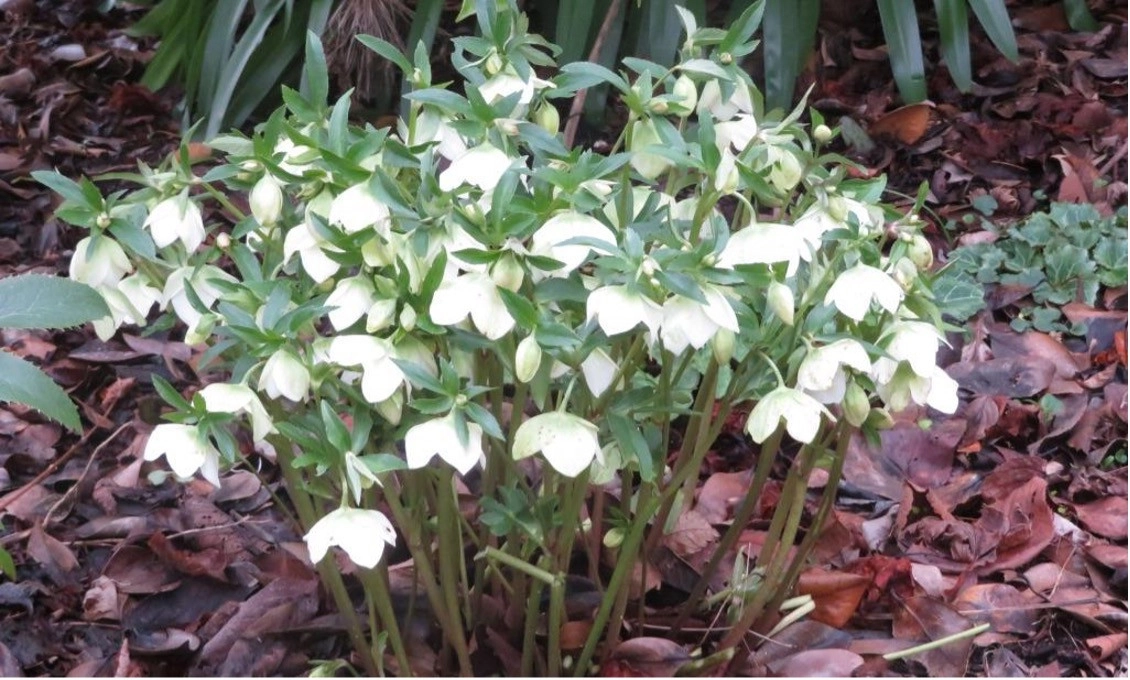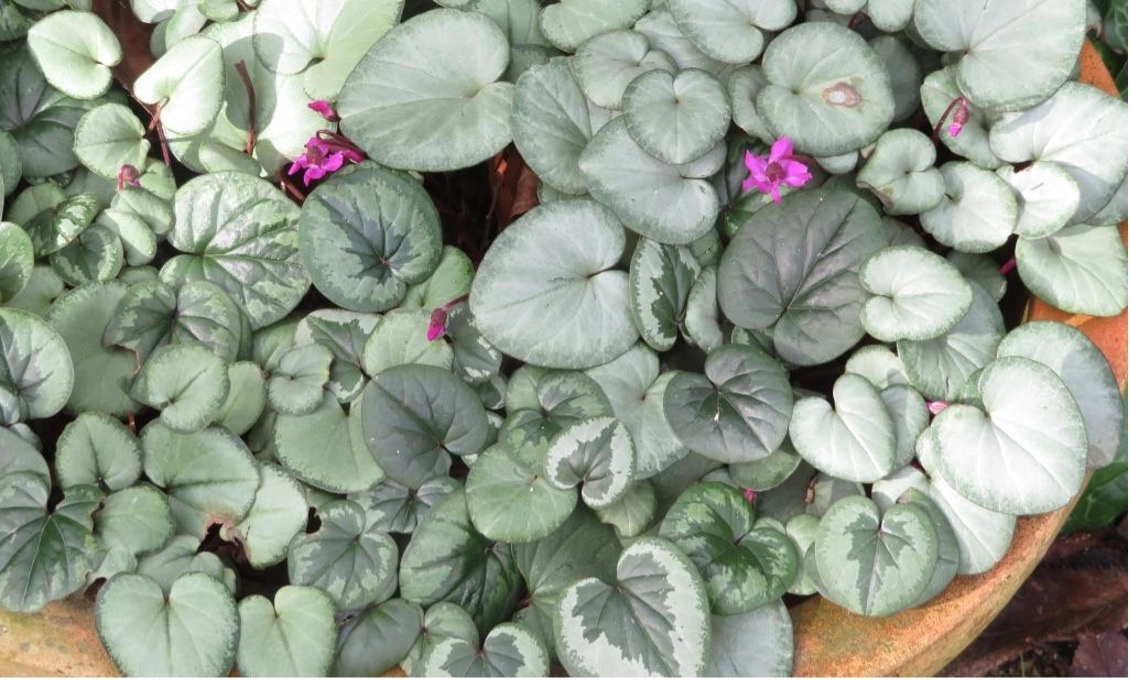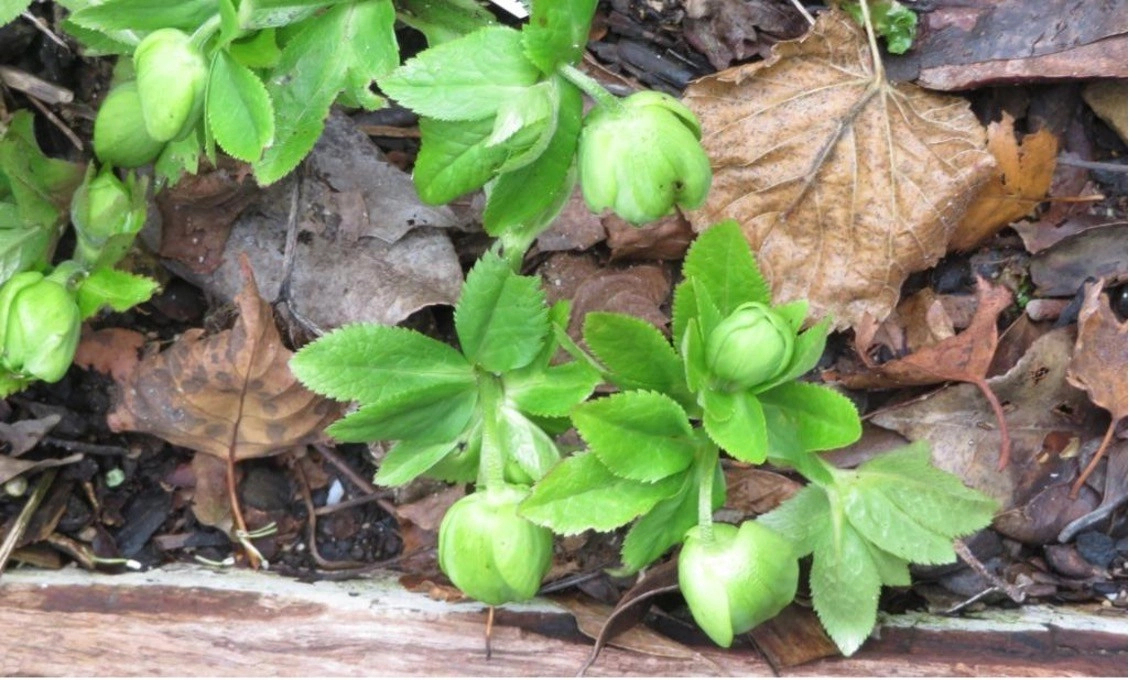
Small, early bulbs are ideal for winter.
Interplanted with later shooting perennials and small shrubs, they will flower when the bigger plants are dormant and benefit from the shade as the bigger plants leaf out. Like all bulbs, the small kinds need a dry resting period over summer, but they will not tolerate being baked in soils overheated by direct sunshine. Being thrifty plants, accustomed to living in hungry root-filled soils among low shrubs and herbs – such as the phrygana of Greece and the maquis and garrigue* of Provence, they get by with a light sprinkle of tomato food applied as the new leaves emerge.
*There are two kinds of shrubs: small shrubs and stunted trees, and dwarf shrubs and low herbaceous perennials.
Snowdrop flowers come up despite wind, rain, frost and hail.
Snowdrops – Galanthus species. A race of winter flowering bulbs with strong cultural connections to Europe and England, which explains their current popularity. While many species are available from specialist bulb growers, the hardiest kinds are derived from Galanthus Elwesii, readily available from Victoria and Tasmania growers. Silver green leaves appear first, followed by stems holding up pristine bells of white flowers; the outer three petals are snowy white, and the inner three are marked with green blotches in various combinations – by which the numerous kinds can be distinguished.
Mouse plant, a great favourite with children and so easy to grow.
Asrisarum vulgare – the Mouse Plant. A very eager coloniser of shady, dry-ish spots that appears in late autumn bearing 2 or 3 narrow cordate leaves (heart-shaped) with some silvery blotches. By mid-winter, short stems appear and hold up curious brown, hooded flowers with white stripes. Most appealing to children and a very willing do-er. A tuberous plant well suited to dry out-of-the-way spots where it can multiply happily without becoming a nuisance. A plant much loved by Colonial era gardeners that has now fallen from favour but is charming nonetheless.

Cyclamen coum has no common name which seems appropriate for such a rare beauty.
Cyclamen coum - A race of small tubers from Turkey where they inhabit mountain passes and coastal plains generally among rocks and under the high cover of deciduous trees. There are many selected cultivars in various leaf patterns and flower colours ranging from pure white to deep rose and cerise. New seedlings are encouraged by not digging around the tubers, which can be moved to new spots after a year or two. Tubers produce large amounts of seed, soon spreading to make a delightful colony.

The Green Hellebore is but one of a handful that shows green flowers. Slow to get started, it will make a strong and floriferous clump within five years.
Helleborus cyclophyllus – An intense green flower colour marks this Hellebore as one of distinction. Hailing from northern Greece, Macedonia, Bulgaria, and Albania, this plant is on the edges of deciduous forests, among rocks and leaf mould. At mid-winter, the leaves have blackened and should be cut away. Very soon, the flower stems will emerge and thrive, first showing a ruff of bright green leaves with matching flower buds held among them. The flower buds and stalks will keep growing until they stand above the leaves, and the flowers open to the familiar pendant circular flowers with prominent stamens and anthers – all dressed in a brilliant apple green.




